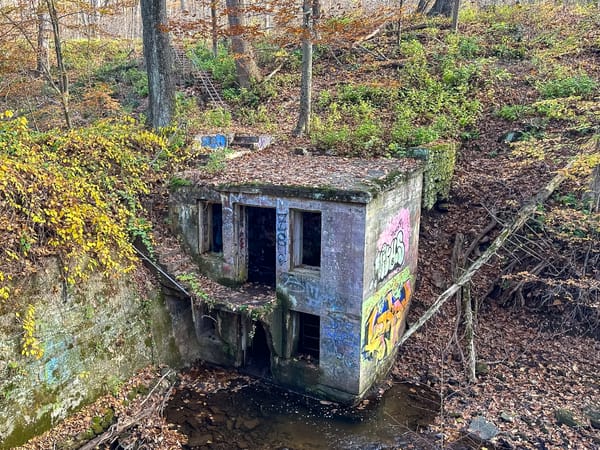Battery Belton (Newport, RI)
Battery Belton in Newport, Rhode Island, is one of the best preserved relics of America’s early 20th-century coastal defense network.

Hidden along Lincoln Drive within the historic Fort Adams State Park in Newport, Rhode Island, stands one of the most beautifully preserved relics of America’s early 20th-century coastal defense network — Battery Belton.
Built during the Endicott Period (1890–1910), when the United States undertook a sweeping modernization of its harbor defenses, Battery Belton once helped protect the vital entrance to Newport Harbor. Today, after decades of neglect and a remarkable restoration, it stands as a shining example of successful military preservation on Rhode Island’s coast.

The Construction of Battery Belton
Construction of Battery Belton began in October 1903 and was completed by 1905. The U.S. Army Coast Artillery Corps officially accepted it into service on July 31, 1907, as part of the Harbor Defenses of Narragansett Bay.
The battery was named in honor of Lieutenant Colonel Francis S. Belton, a U.S. Army officer remembered for his distinguished service in the early 19th century.
Built of reinforced concrete, Battery Belton was designed as a two-story gun battery. The upper level housed two 3-inch M1903 guns on M1903 Pedestal mounts, both manufactured at the Watervliet Arsenal in New York. These guns could launch 20-pound projectiles over nine miles, providing coverage of the harbor entrance and surrounding waters.
Below, the lower level contained the magazines — rooms where shells and powder were stored. Because of the relatively light ammunition, no shell or powder hoists were installed; soldiers carried projectiles manually from the magazine to the gun platforms.
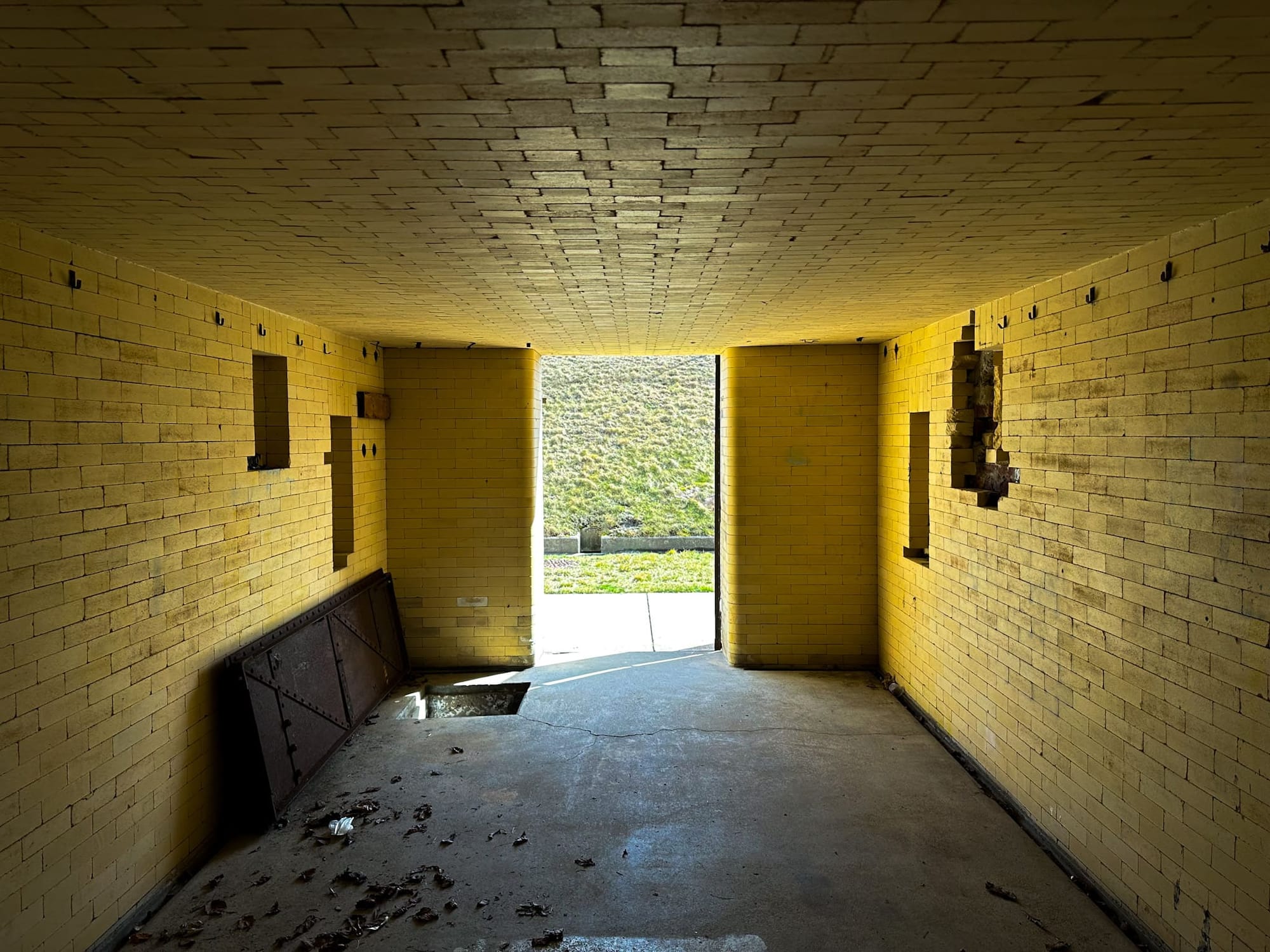
Battery Belton During World War I
When the United States entered World War I, many coastal batteries across Rhode Island had their guns removed and shipped overseas to support Allied forces.
Uniquely, Battery Belton’s guns remained in place throughout the war. Even during the 1920 disarmament program, when dozens of coastal installations were dismantled or disarmed, Battery Belton remained untouched — a rare survivor from the early 1900s Endicott fortification network.
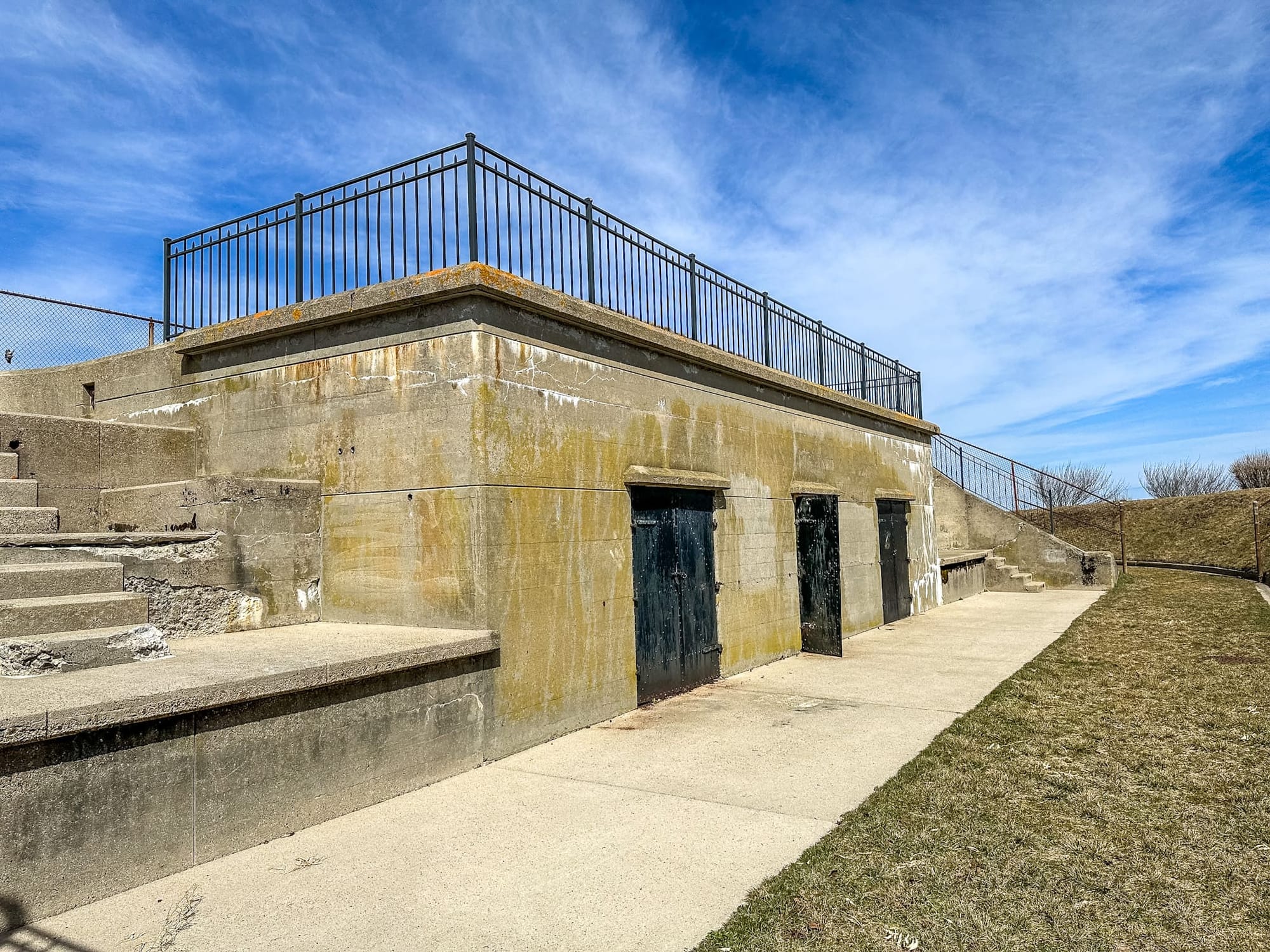
Deactivation and Abandonment
By 1925, newer coastal defenses had rendered many of Fort Adams’ smaller batteries obsolete. On February 7, 1925, orders were issued to remove Battery Belton’s guns and carriages, which were transferred to Fort Wetherill in Jamestown and mounted in Battery Crittenden.
Shortly after, Battery Belton was officially deactivated and left to the elements. Over the following decades, the structure deteriorated — its concrete cracked, vines crept over its walls, and trees grew thick around its perimeter.

Restoration and Preservation
By the early 2000s, Battery Belton was nearly invisible under layers of vegetation. Recognizing its historical value, Fort Adams Trust and park managers began a restoration initiative during the 2010s to save and stabilize the battery.
Preservation efforts included:
- Removing years of overgrowth and invasive vegetation
- Repairing and painting the concrete structure
- Restoring doorways and metalwork
- Installing a protective fence around the site
The result is stunning: today, Battery Belton is one of the best-preserved small Endicott batteries in New England — a testament to the importance of historical preservation.

Visiting Battery Belton Today
Unlike many coastal batteries, Battery Belton is open to visitors and in remarkably good condition. You can walk around the structure, explore the gun platforms, and even peek inside one of the old magazine rooms. Interpretive signs help visitors imagine what life here might have been like when the guns still stood guard over Newport Harbor.
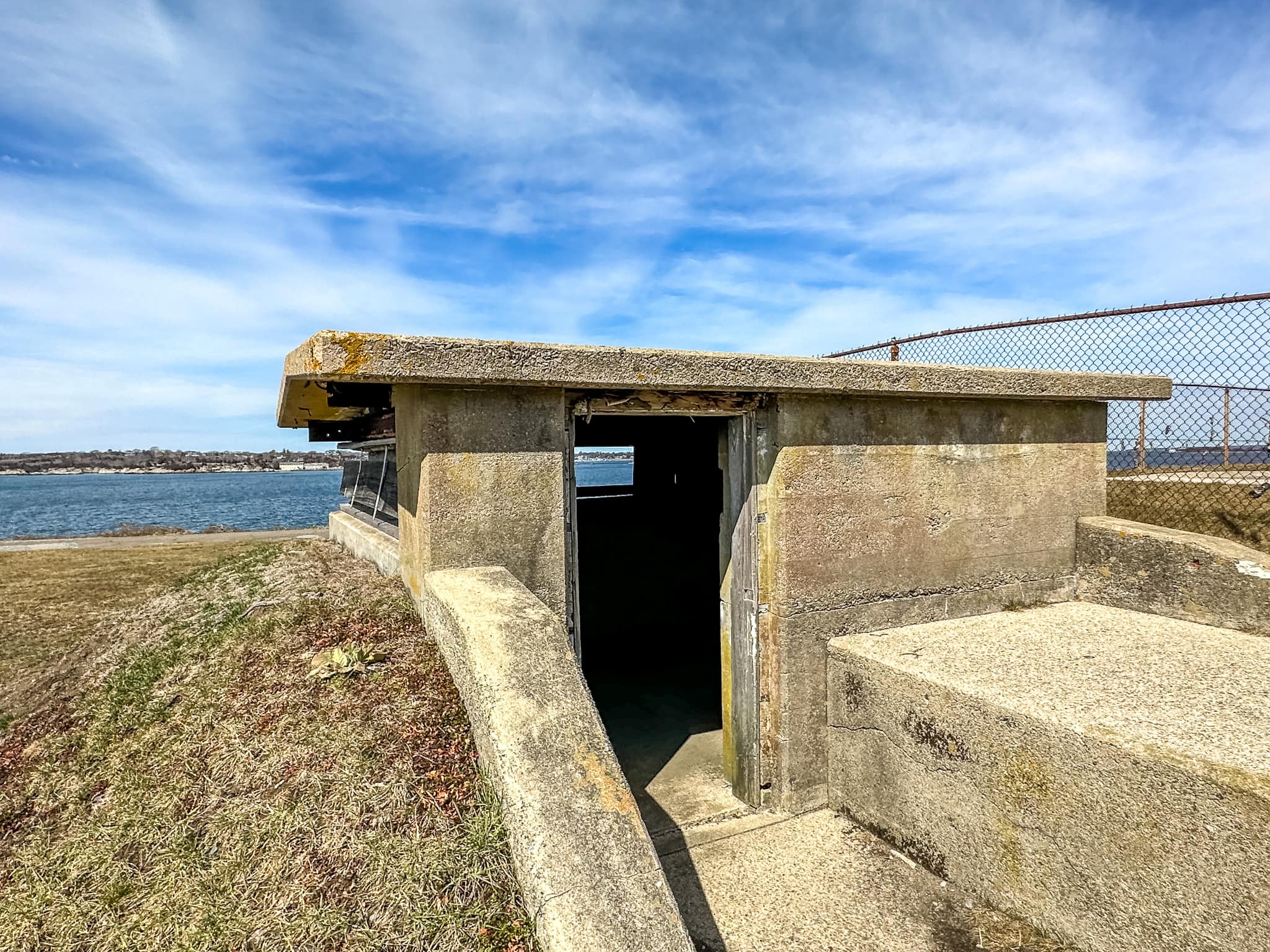
Location Details
- 📍 Address: Lincoln Drive, Newport, Rhode Island
- 🌐 GPS Coordinates: 41.472278, –71.345611
- 🅿️ Parking: A small, free dirt pull-off is located along Lincoln Drive, just steps away from the battery.
- ⏰ Hours: Open during Fort Adams State Park hours
- 💬 Tip: Visit in the morning or late afternoon for the best light and quietest atmosphere.
Battery Belton is officially part of Fort Adams State Park and listed on the National Register of Historic Places (Ref. #70000014).
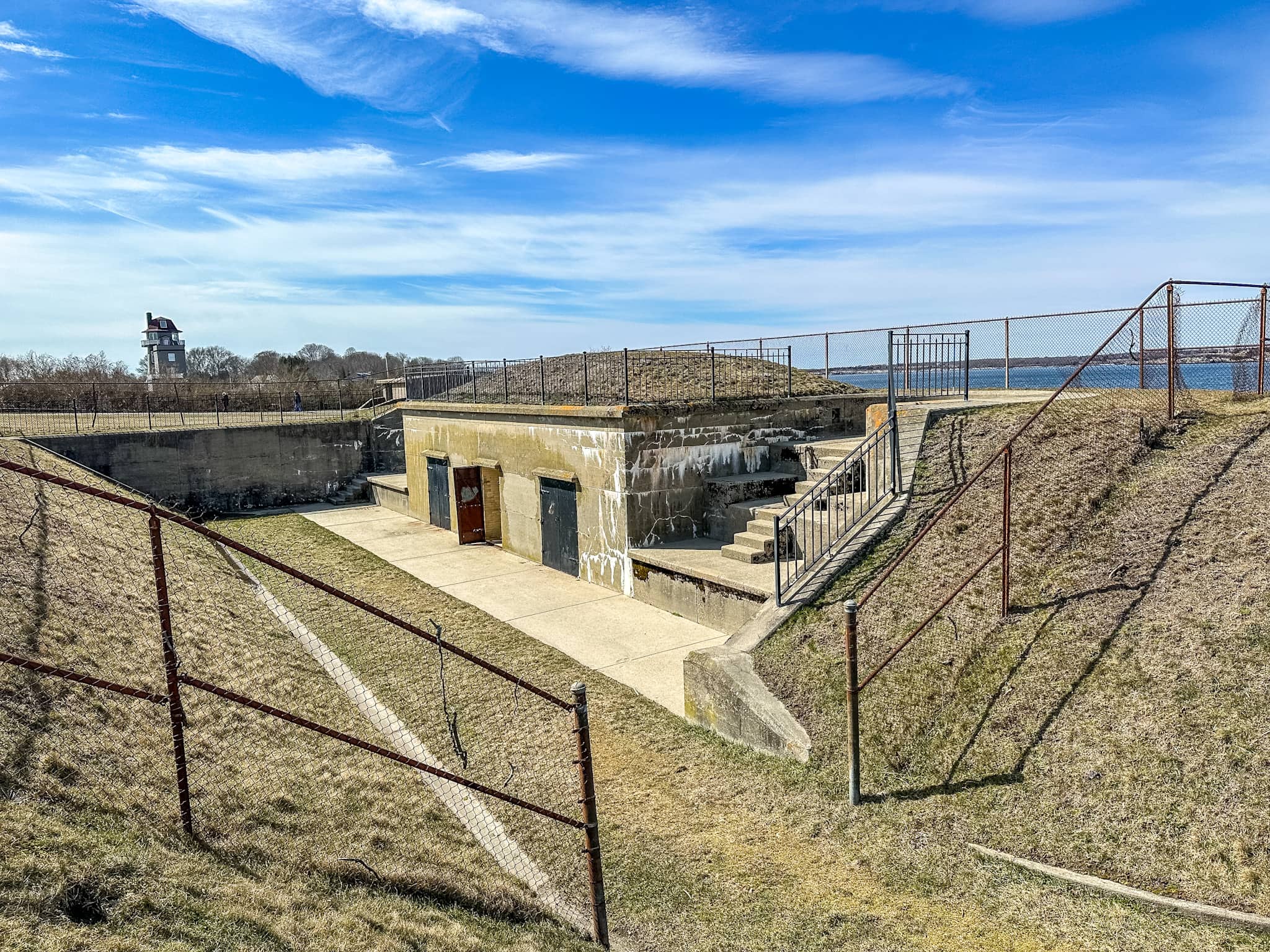
Why Battery Belton Matters
Battery Belton tells a story of resilience — not only of military history, but of community care and preservation. From its early days as part of America’s coastal defense strategy to its near-loss under decades of overgrowth, the battery now stands proudly restored, inviting visitors to walk through the remnants of a bygone era.
For history enthusiasts, photographers, and anyone exploring Fort Adams State Park, Battery Belton offers one of the most tangible connections to the Endicott Period — and a rare glimpse at how Rhode Island’s coast once bristled with defensive power.
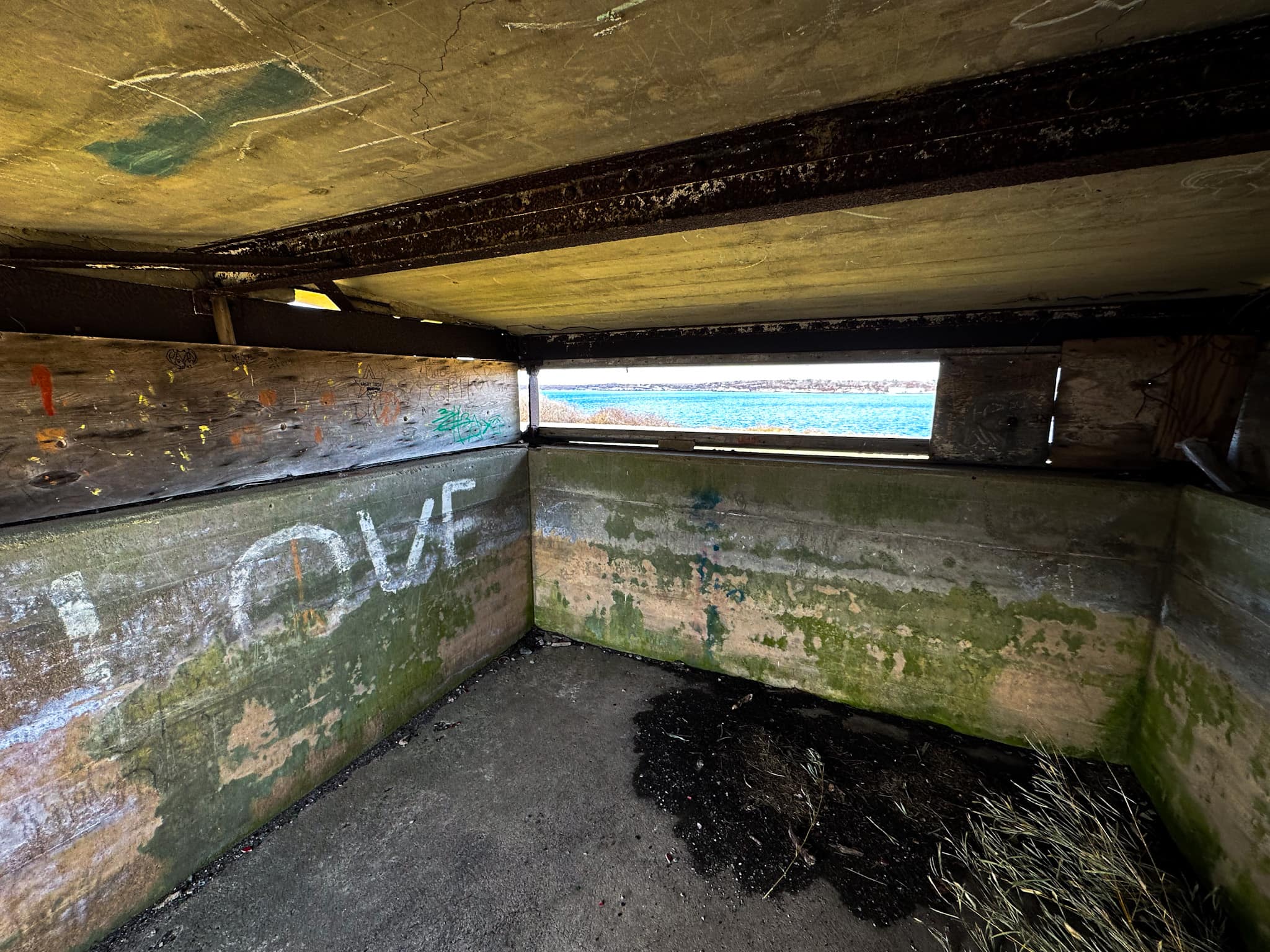
Quick Facts
- 🕰 Built: 1903 – 1905
- ⚙️ Armament: Two 3-inch M1903 guns on M1903 Pedestal mounts
- 🔫 Range: Over 9 miles
- 💣 Projectile weight: 20 pounds
- 🪖 Transferred: Guns moved to Fort Wetherill (Battery Crittenden) in 1925
- ⛔ Deactivated: 1925
- 🏛 Listed on: National Register of Historic Places (#70000014)
Final Thoughts
If you’re exploring Fort Adams State Park, don’t miss Battery Belton — one of Rhode Island’s most remarkable and well-preserved coastal defense structures. Restored to stability after nearly a century of decay, it offers a vivid reminder of America’s determination to protect its harbors — and the enduring power of preserving history for future generations.



